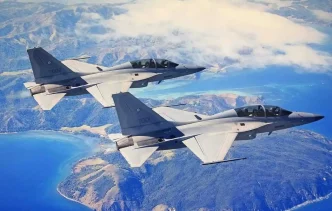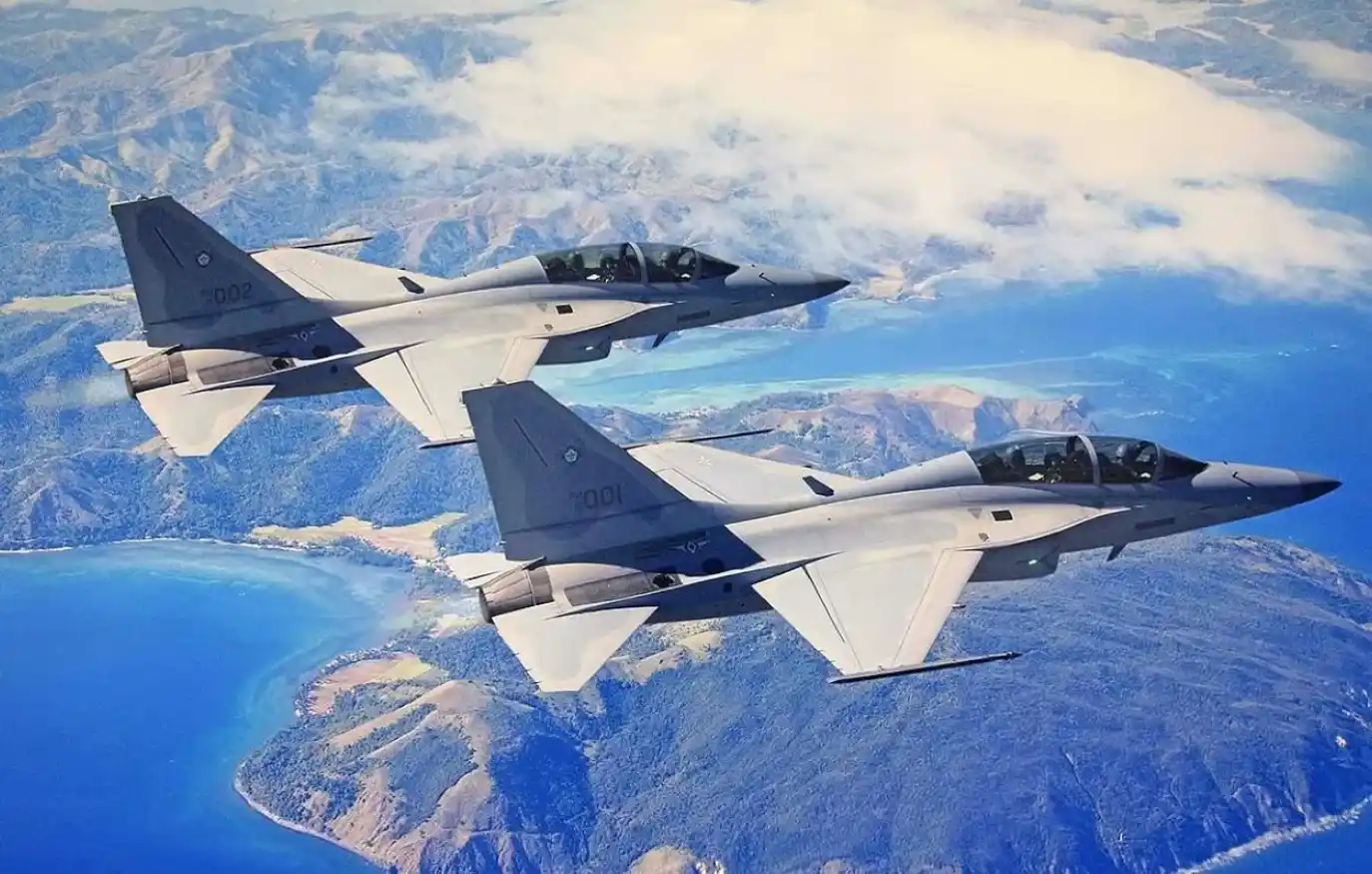Manila has taken a significant step toward modernizing its air force with a $700 million deal to acquire 12 additional FA-50PH fighter jets from South Korea’s Korea Aerospace Industries (KAI). The agreement, confirmed by the Philippine Department of National Defense, marks a pivotal moment in the country’s efforts to strengthen its military capabilities amid escalating tensions in the South China Sea and broader regional security concerns. As the Philippines seeks to assert its sovereignty and protect its maritime interests, this acquisition signals both a deepening partnership with Seoul and a strategic push to address longstanding gaps in defense infrastructure.
A Strategic Upgrade for the Philippine Air Force
The FA-50PH jets, a light combat aircraft variant of the T-50 advanced trainer, are not new to the Philippine Air Force (PAF). The country already operates 12 of these jets, acquired in a 2014 deal worth approximately $420 million, as part of its initial foray into modernizing its aging fleet. The new order, valued at $700 million (approximately 40 billion Philippine Pesos, US$700 million), reflects both inflation and an enhanced configuration of the aircraft, though specific upgrades have not been publicly detailed by the Department of National Defense.
Defense Secretary Gilberto Teodoro Jr. hailed the acquisition as a cornerstone of the Philippines’ military modernization program. “This investment underscores our commitment to safeguarding national sovereignty and ensuring a credible defense posture” he said during a press briefing. The jets are expected to bolster the PAF’s capacity for air defense, surveillance, and limited strike operations, filling a critical gap left by the retirement of older aircraft like the F-5 fighters in the early 2000s.
The deal comes under the Horizon 2 phase of the Armed Forces of the Philippines (AFP) Modernization Program, which prioritizes external defense over internal security operations. Analysts see this as a direct response to growing geopolitical pressures, particularly in the West Philippine Sea, where Manila faces frequent incursions by Chinese vessels into its exclusive economic zone (EEZ). The FA-50PH, while not a match for advanced stealth fighters, offers a cost-effective solution for a nation with limited defense budgets, providing versatility for both training and combat roles.
Deepening Ties with South Korea
The acquisition further cements the Philippines’ defense partnership with South Korea, a relationship that has grown steadily over the past decade. Seoul has emerged as a key supplier of military hardware to Manila, offering competitive pricing and flexible financing compared to Western counterparts. Beyond the FA-50PH jets, South Korea has provided the Philippines with naval assets, including two Jose Rizal-class frigates delivered in 2020 and 2021, and surplus Pohang-class corvettes transferred as part of military aid.
“South Korea has become a trusted partner in our modernization journey” said a senior official from the Department of National Defense, speaking on condition of anonymity. The official noted that the latest deal includes provisions for training, maintenance support, and potential technology transfers, though details remain under negotiation. This collaboration aligns with Manila’s strategy to diversify its defense suppliers, reducing reliance on traditional allies like the United States while still maintaining interoperability with Western systems.
The $700 million contract also reflects a broader trend of South Korea’s expanding footprint in the global defense market. KAI, the manufacturer of the FA-50, has secured contracts with countries like Poland and Malaysia in recent years, positioning itself as a rival to established players like Lockheed Martin and Dassault. For the Philippines, the deal represents not just a military upgrade but also an economic vote of confidence in Seoul’s industrial capabilities.
Regional Implications Amid South China Sea Tensions
The timing of the acquisition is hardly coincidental. The Philippines has faced increasing assertiveness from China in the South China Sea, with disputes over features like Scarborough Shoal and Second Thomas Shoal escalating in recent years. While the FA-50PH jets are unlikely to directly confront advanced Chinese military assets, their deployment could enhance Manila’s ability to monitor and respond to maritime incursions, particularly when paired with other surveillance systems.
Security analyst Maria Santos, based in Manila, emphasized the symbolic weight of the purchase. “This sends a message that the Philippines is serious about building a minimum credible deterrence” she said. “It’s not about matching China’s firepower but about showing resolve and improving situational awareness in contested areas.” Santos also pointed to the jets’ potential role in joint exercises with allies like the United States, Japan, and Australia, which have ramped up military cooperation with Manila under frameworks like the Quadrilateral Security Dialogue (Quad).
However, some experts caution against overestimating the strategic impact of the FA-50PH fleet. The aircraft, designed primarily as a light attack and trainer platform, lack the range and payload of more advanced fighters like the F-16 or J-10. “They’re a step forward, but the PAF still faces significant limitations in terms of air superiority and long-range strike capabilities” noted defense consultant Rafael Lim. He suggested that future acquisitions under Horizon 3 of the modernization program may target multi-role fighters to address these gaps, though budget constraints remain a hurdle.
Domestic and Economic Considerations
Domestically, the $700 million expenditure has sparked mixed reactions. While defense advocates argue that the investment is long overdue given the PAF’s outdated capabilities, critics question the allocation of funds at a time when the country grapples with economic recovery post-pandemic and persistent poverty. “We need jobs and healthcare as much as we need jets” said opposition lawmaker Ana Reyes, urging greater transparency on how the deal will be financed. Reports suggest the purchase may involve loans or deferred payment schemes, though official confirmation is pending.
The economic angle also ties into broader questions about the Philippines’ defense spending priorities. At approximately 1.2% of GDP, military expenditure remains below the regional average, limiting Manila’s ability to keep pace with neighbors like Vietnam and Indonesia, both of which have invested heavily in air and naval assets. The fighter jet deal, while significant, is just one piece of a larger puzzle as the government balances internal development needs with external security threats.
Public sentiment, as reflected in recent social media discussions on platforms like X, appears divided. Many Filipinos express pride in the country’s push for modernization, with posts highlighting the importance of national sovereignty. Others, however, voice skepticism about the cost and effectiveness of the jets, with some users questioning whether the funds could be better spent on disaster preparedness—a perennial concern in a typhoon-prone nation.
Looking Ahead: A Modernized Force in Uncertain Times
As the Philippines awaits delivery of the FA-50PH jets—expected to begin in 2026, according to defense sources—the broader implications of this deal will unfold against a backdrop of regional uncertainty. The South China Sea remains a flashpoint, with overlapping claims from multiple nations and the ever-present risk of miscalculation. For Manila, strengthening its air force is not just about hardware but about projecting resilience and forging alliances that can deter aggression.
Yet questions linger about the sustainability of this modernization push. Will the Philippines secure the funding and political will to maintain and expand its military capabilities? How will China and other regional players interpret this move? And can Manila strike a balance between defense and development in a resource-constrained environment? As the jets prepare to take to the skies, they carry with them not just the weight of national security but the aspirations of a nation navigating a complex geopolitical landscape.















